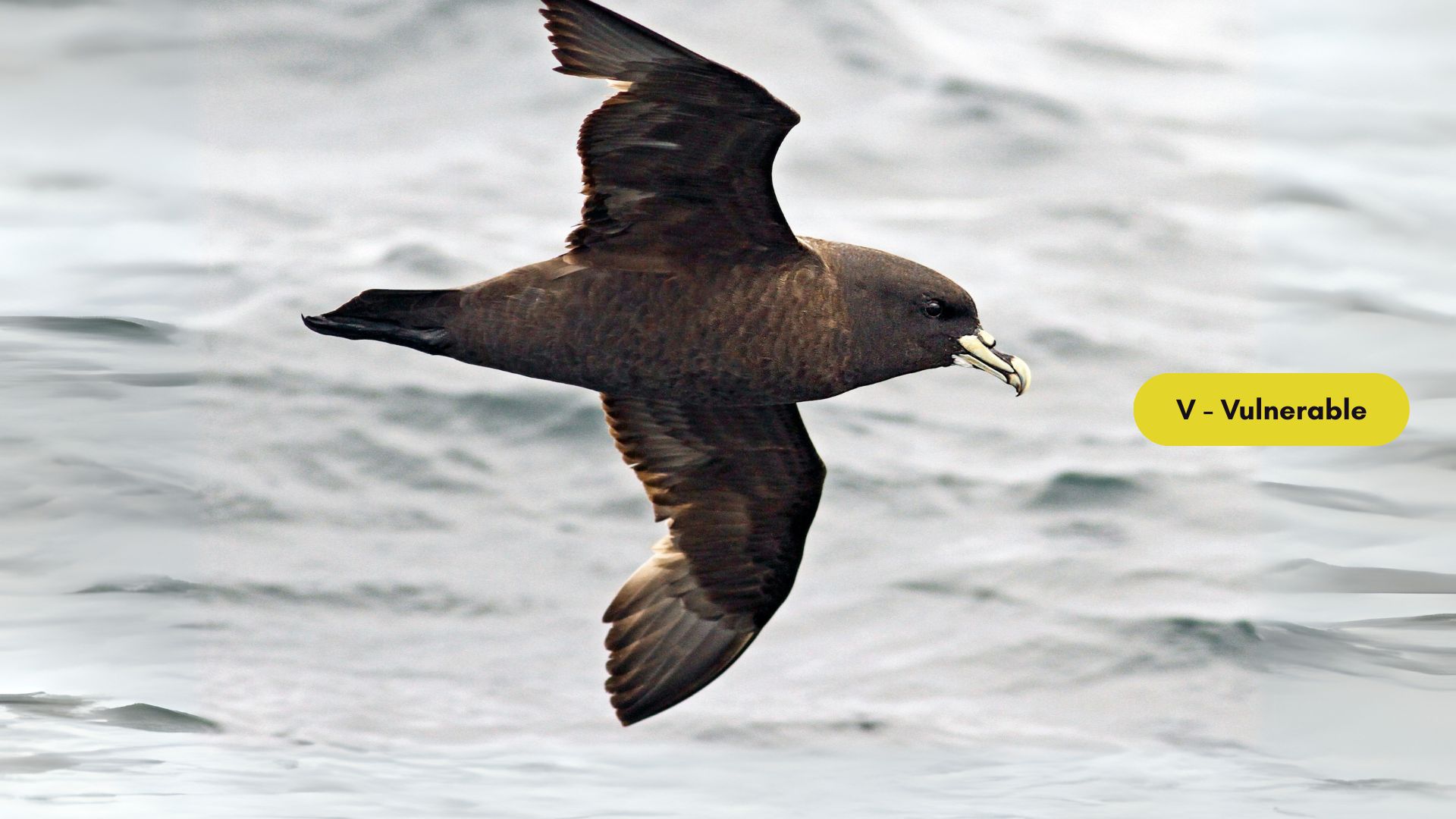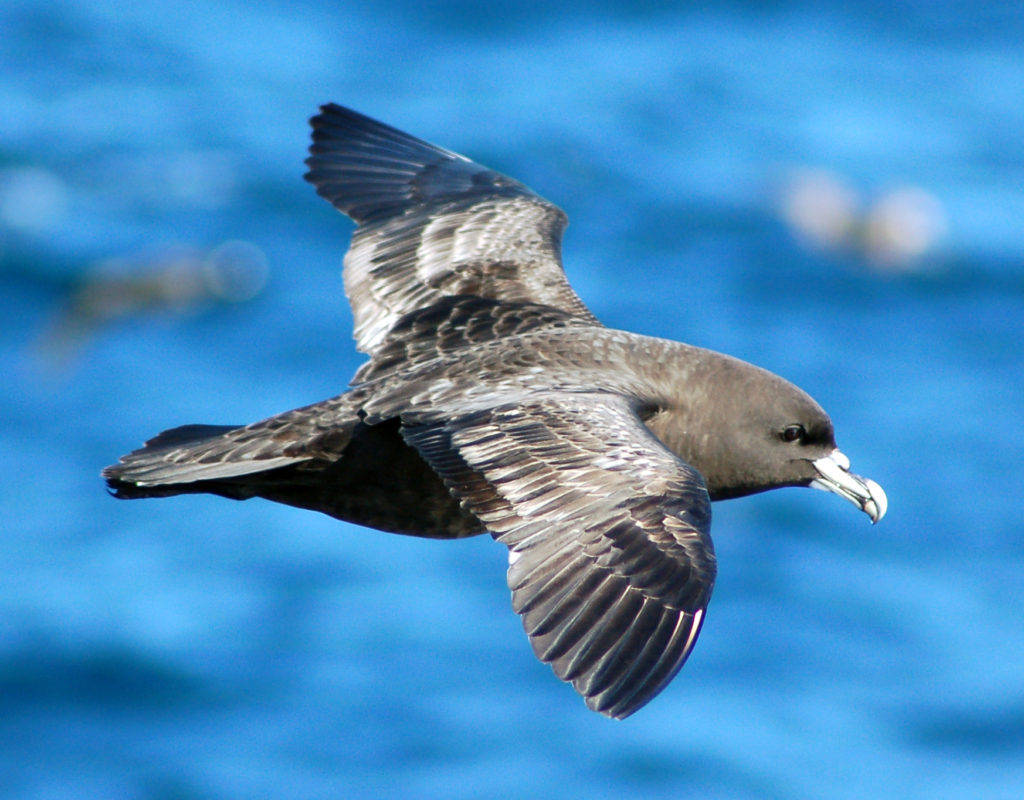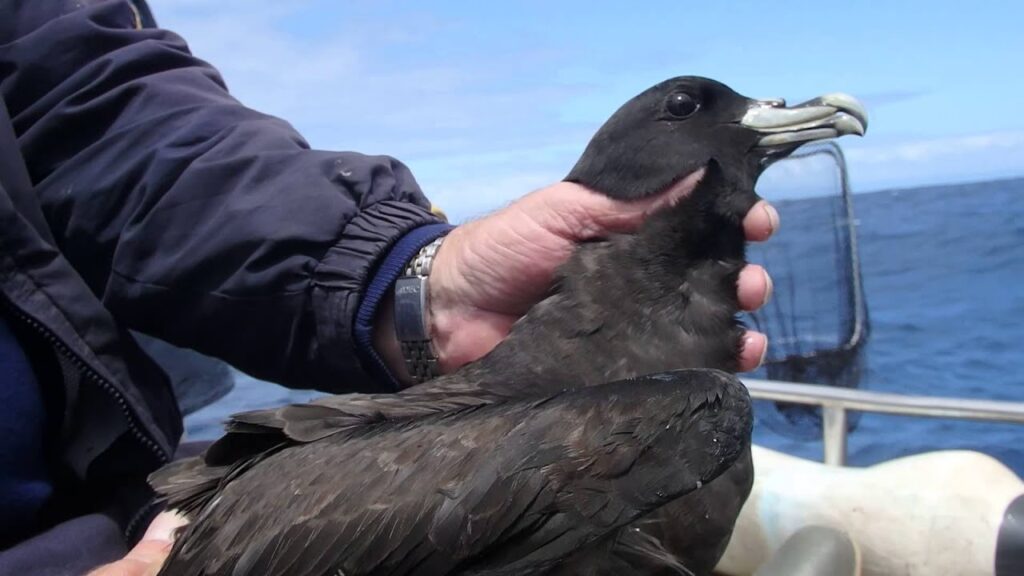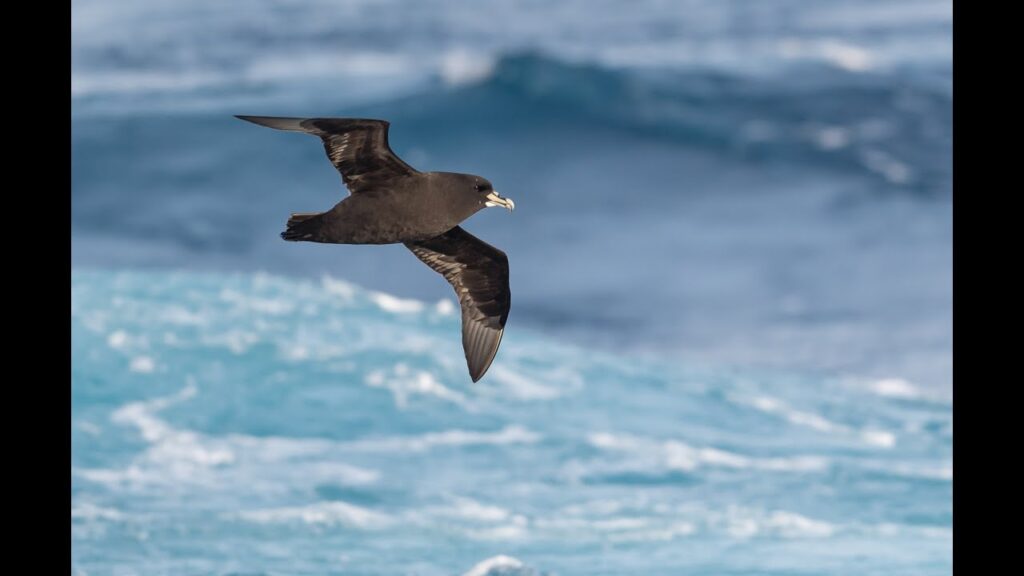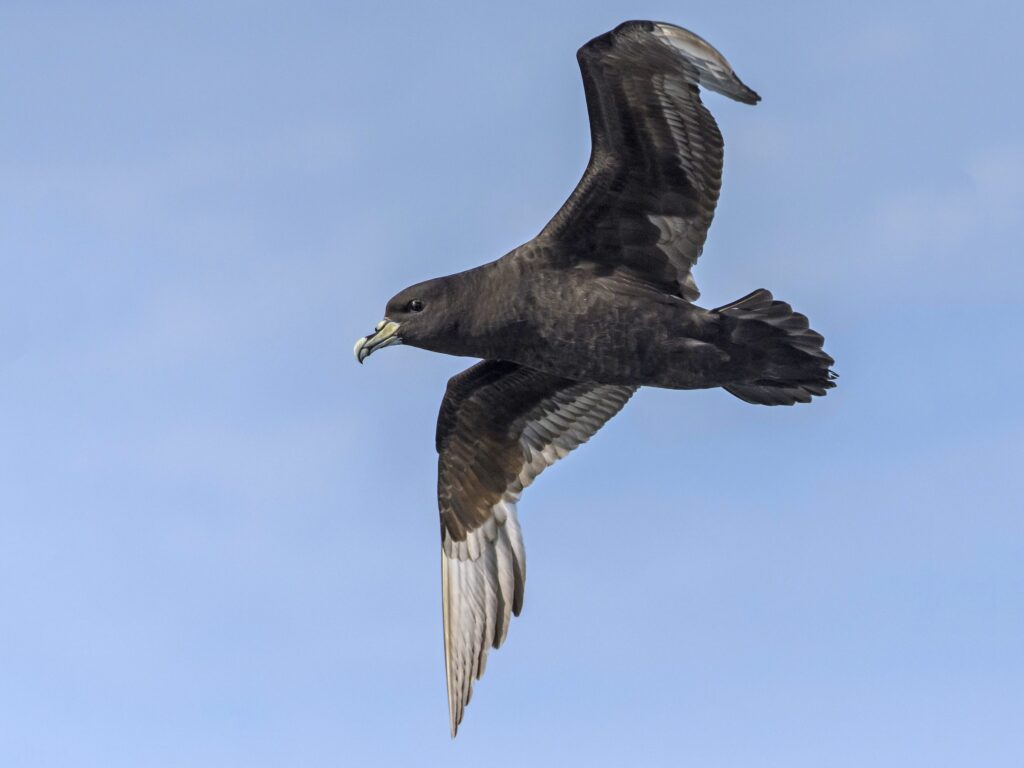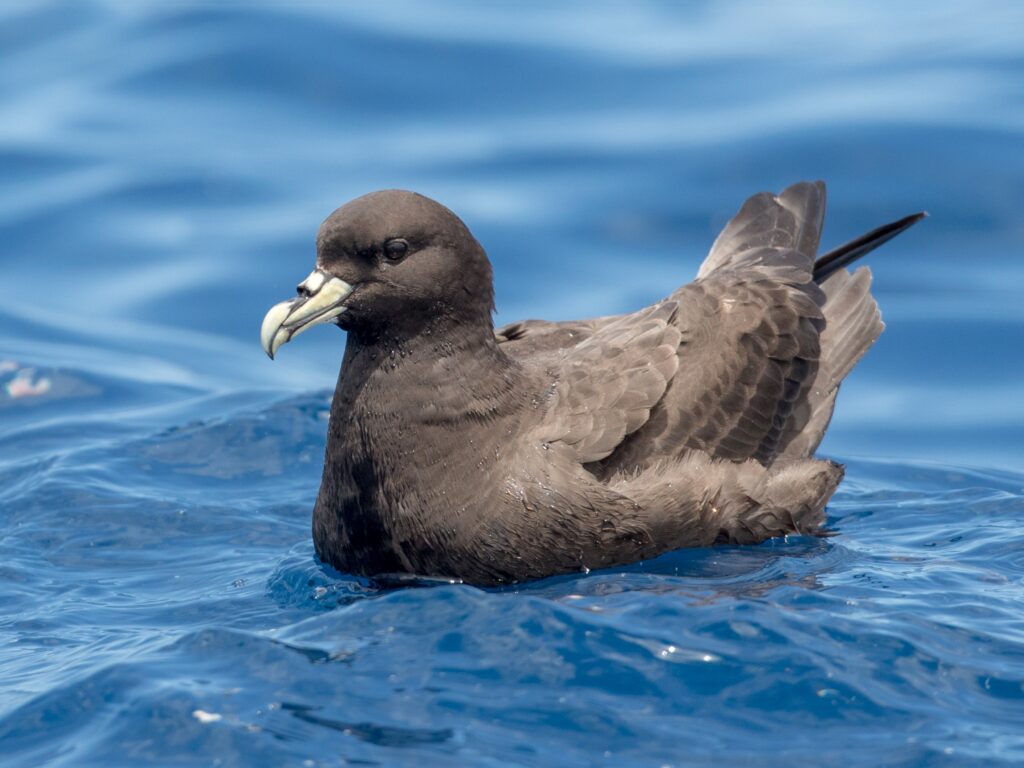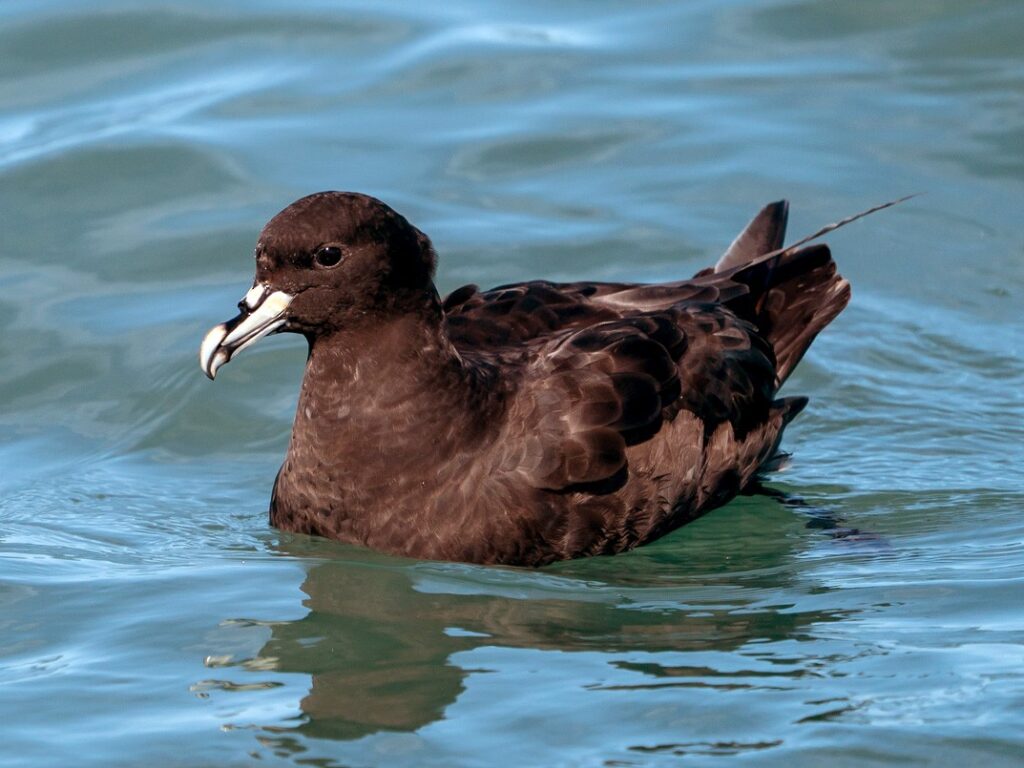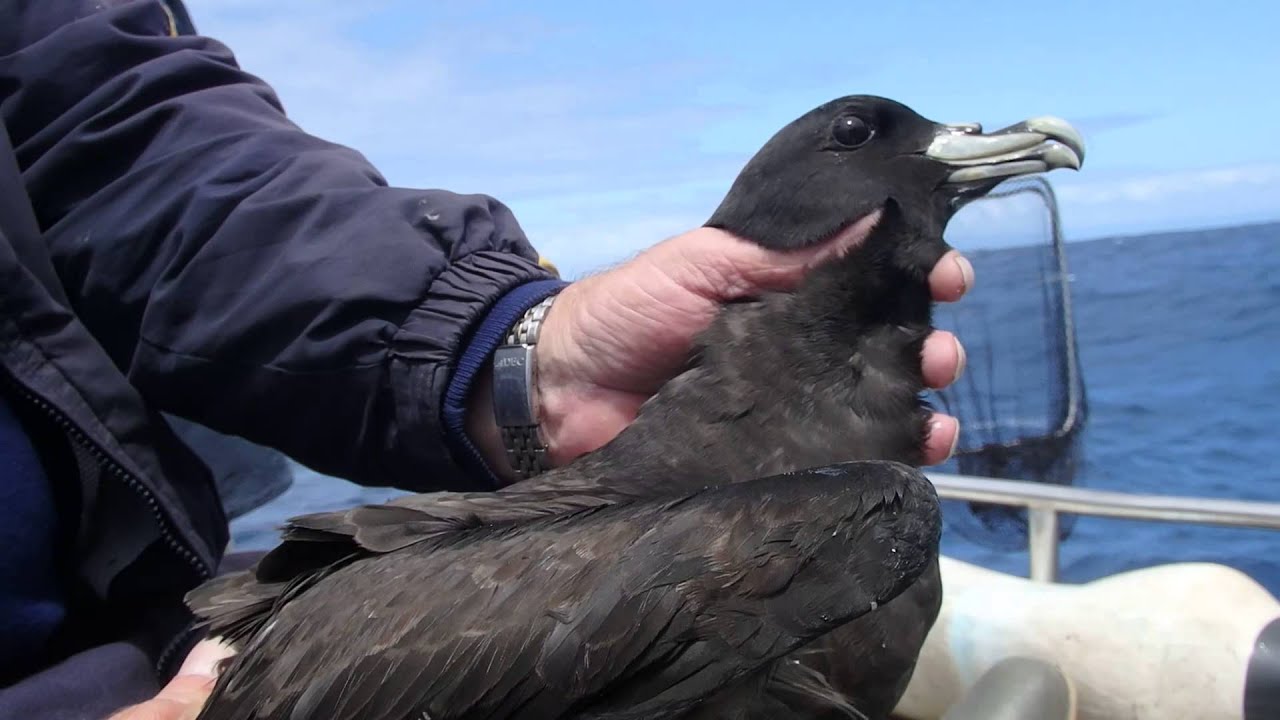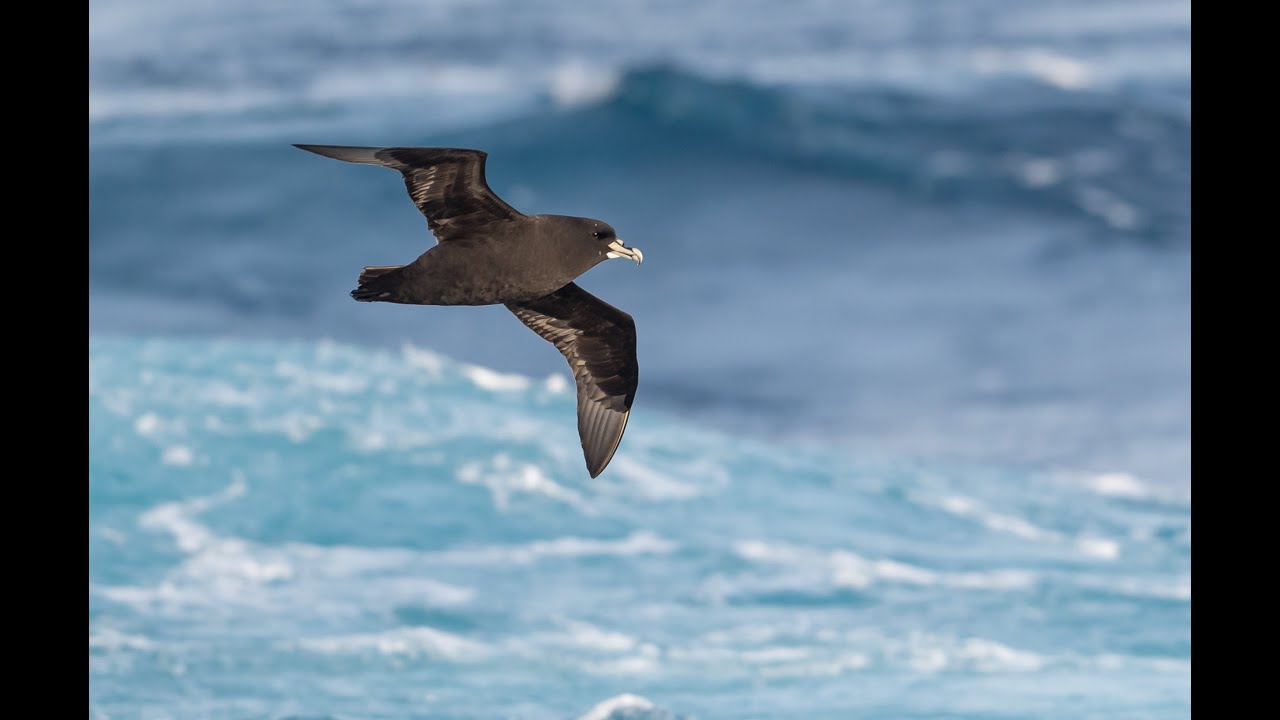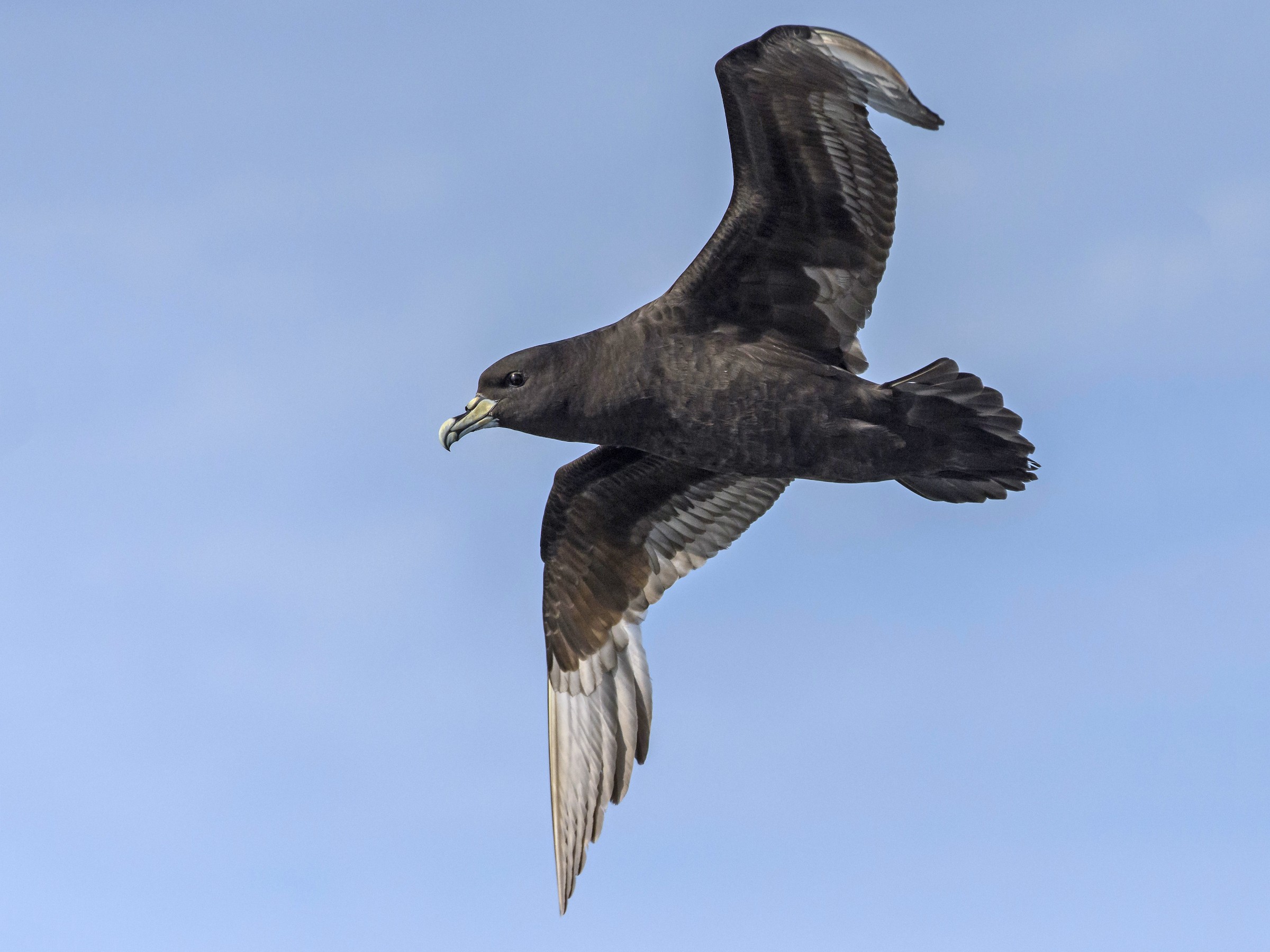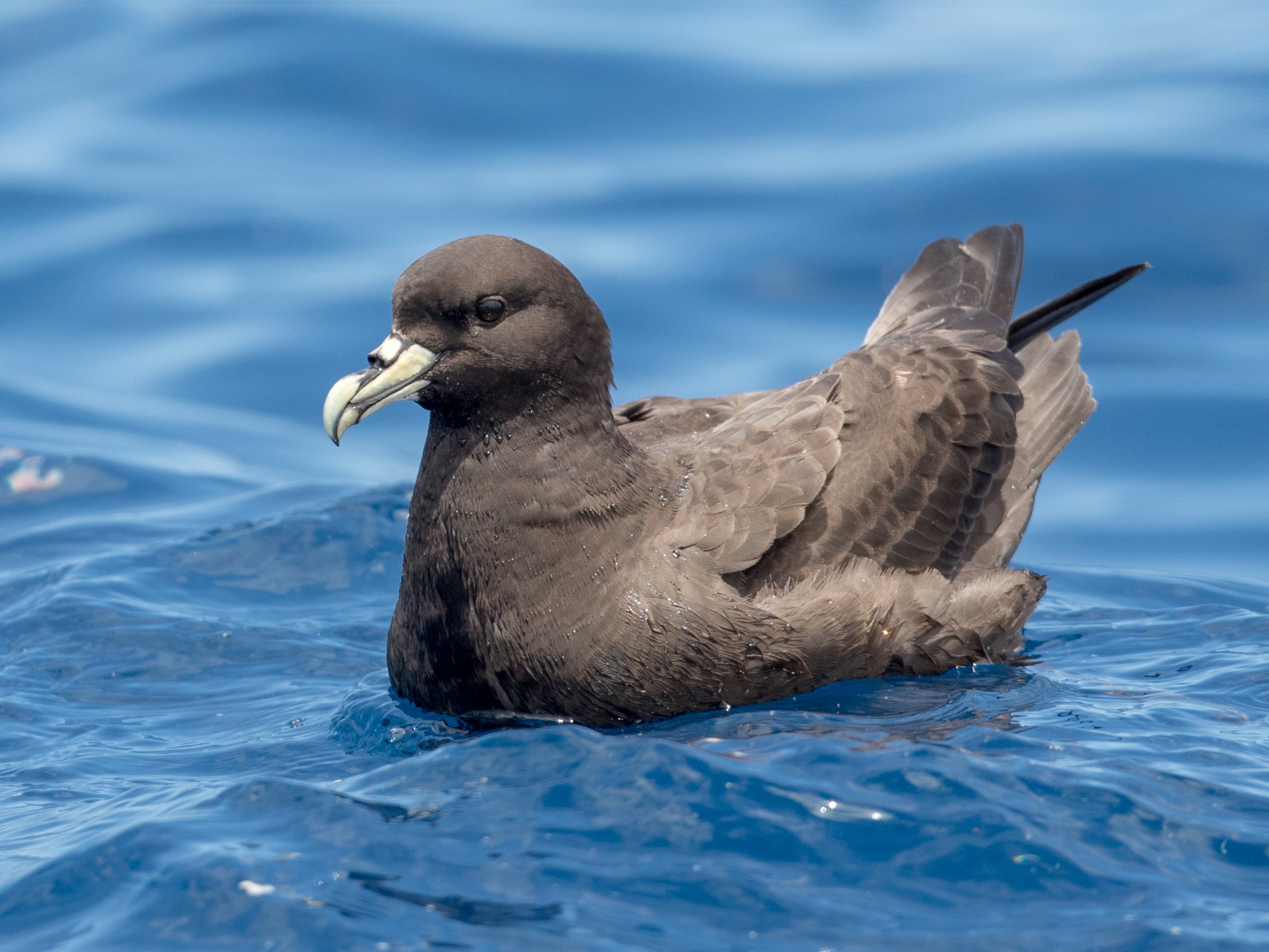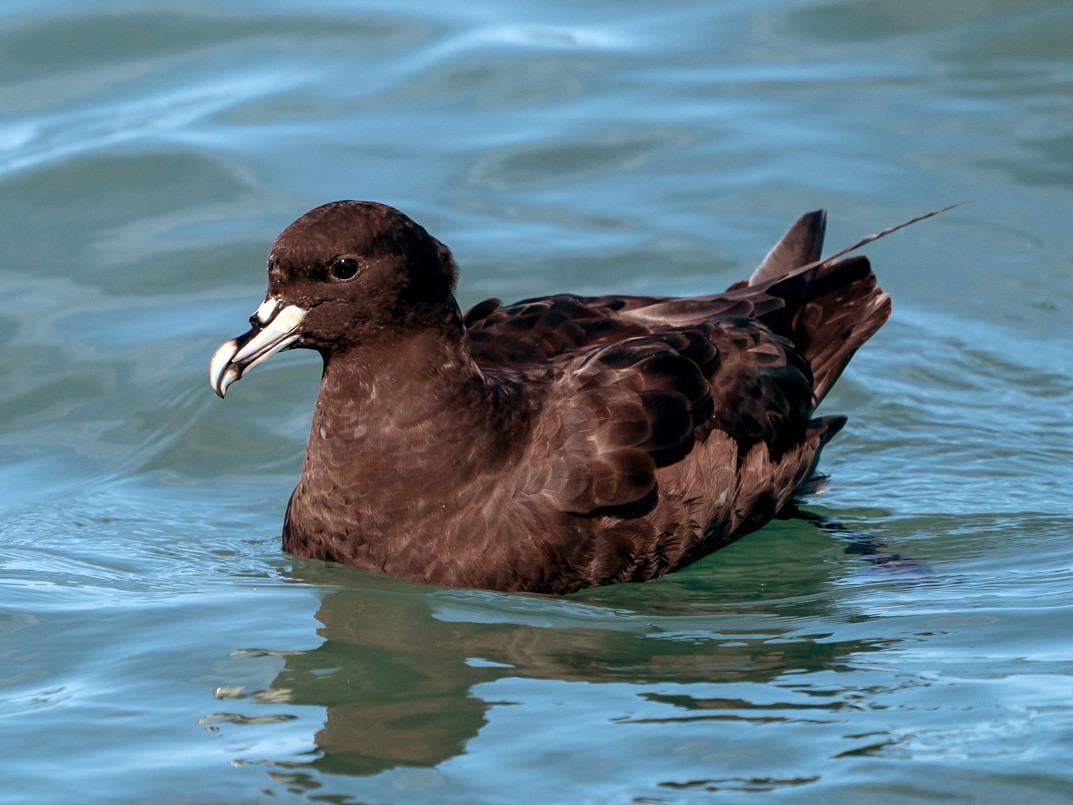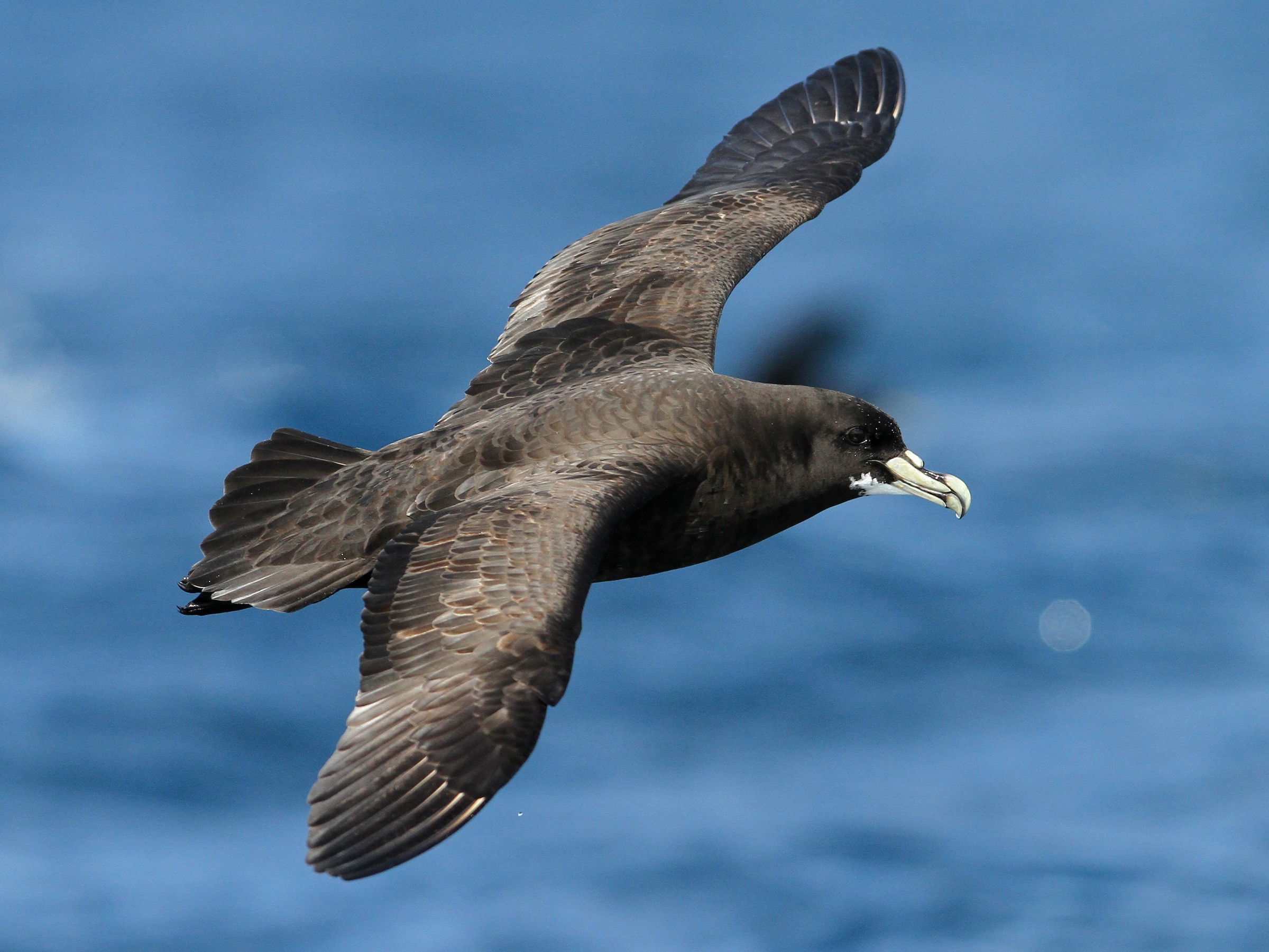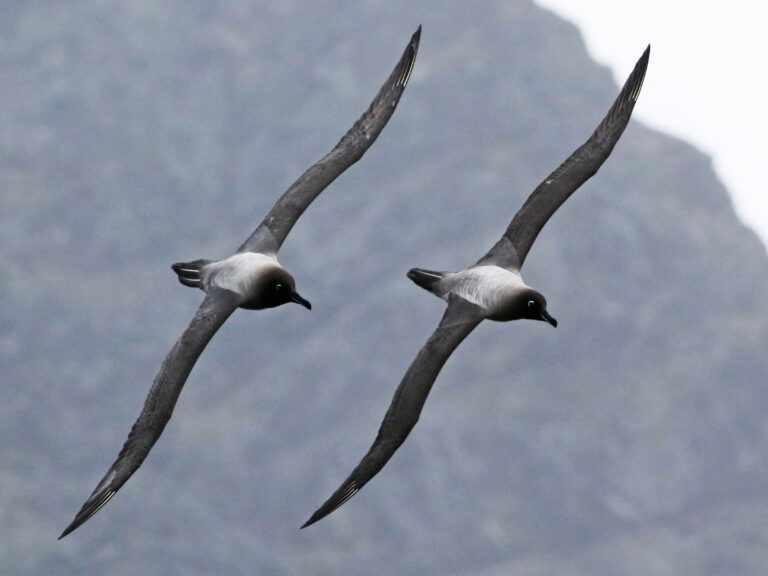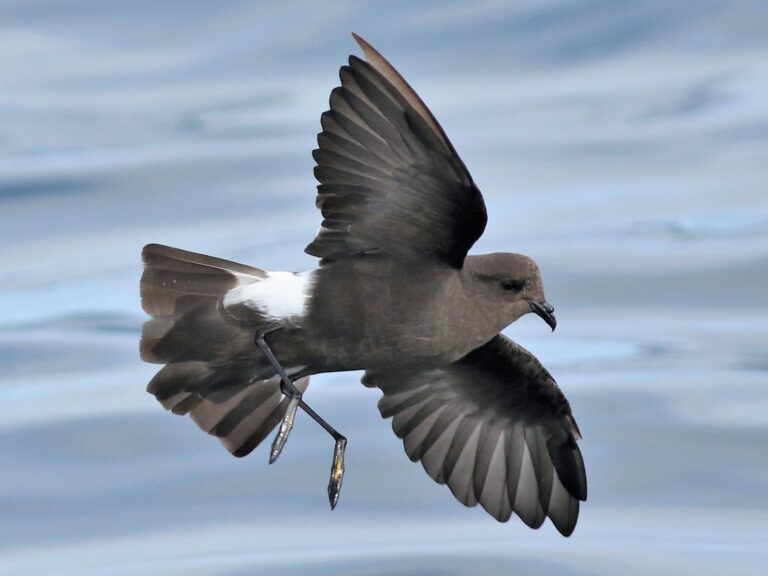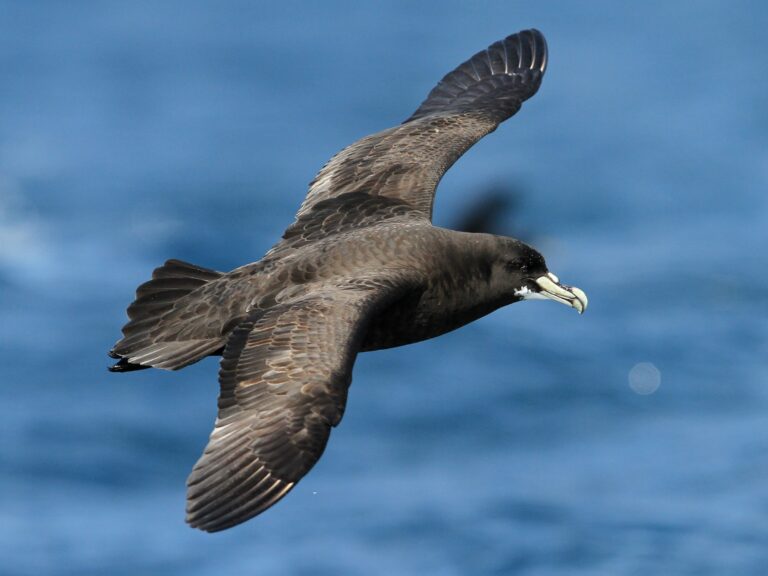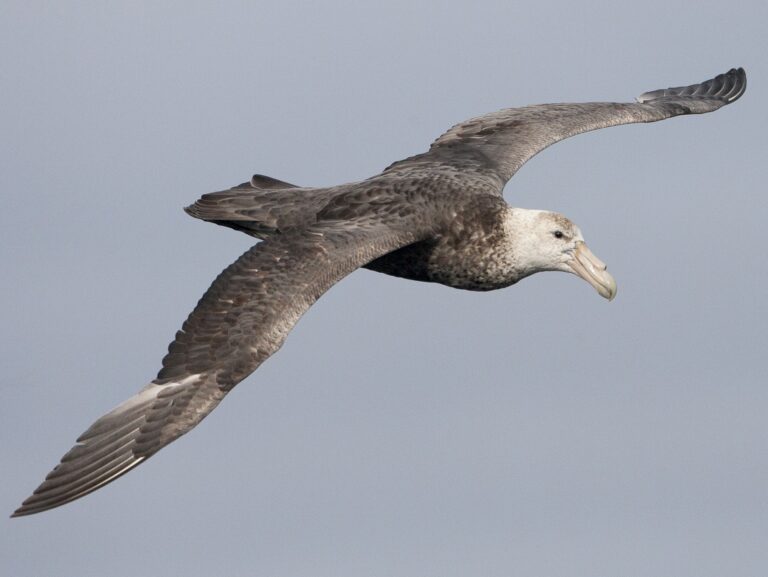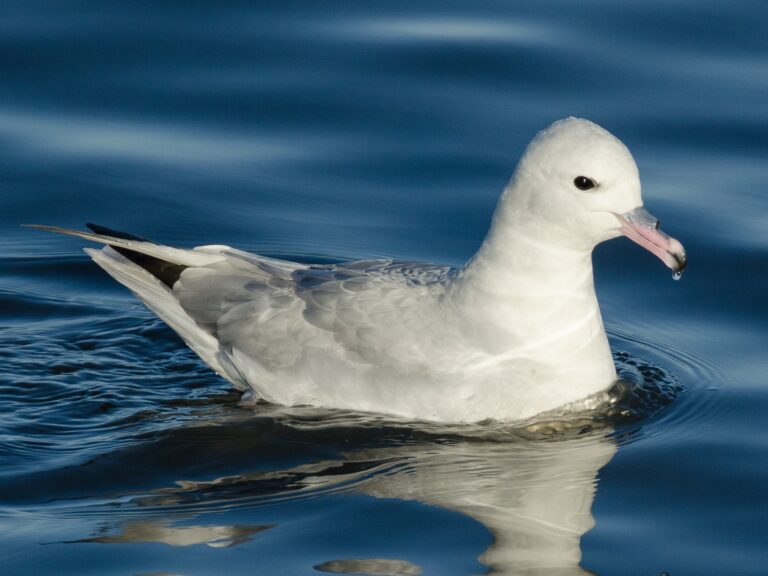White-chinned Petrel: Master of the Southern Ocean and Its Dynamic Habitat
The white-chinned petrel, known scientifically as Procellaria aequinoctialis, is a remarkable seabird that captivates bird watchers and researchers alike. These birds are recognized for their striking appearance and impressive long-distance flying abilities.
These petrels are primarily found in the Southern Ocean, especially around sub-Antarctic islands and the coasts of South America. They are known for their unique foraging patterns, often following fishing boats to scavenge scraps.
This behavior highlights their adaptability but also puts them at risk from fishing activities, which can lead to accidental deaths.
Key Takeaways
- The white-chinned petrel is a key species in marine ecosystems.
- They are at risk due to interactions with fishing practices.
- Ongoing conservation efforts are crucial for their survival.
Sign Up for Our Monthly Newsletter
Every month we send out our newsletter about interesting (and sometimes quirky) things happening in the world of birding. Give it a try!
Taxonomy and Physical Description
The White-chinned Petrel is scientifically classified within the Procellariiformes order. This section discusses its scientific classification, distinctive features, and the variety of names it is known by.
Scientific Classification
The White-chinned Petrel is categorized under the genus Procellaria, specifically as Procellaria aequinoctialis. This species belongs to the family Procellariidae, which includes various petrels and shearwaters.
Within Procellaria, there are two recognized subspecies based on regional differences. The primary distinction is between populations found in the Southern Ocean and those around New Zealand. The use of molecular techniques, like cytochrome b sequencing, has supported the classification of this species, confirming its unique status compared to other petrels.
Distinctive Features
Physically, the White-chinned Petrel is one of the larger petrels, showcasing a striking appearance. It features a predominantly dark brown plumage that appears almost black from a distance.
Notably, the white chin gives the species its name and creates a distinct contrast against the darker feathers. The wingspan of the White-chinned Petrel can reach up to 1.5 meters (approximately 5 feet), enabling graceful flight over ocean waters. Their long wings are adapted for dynamic soaring, which is critical for energy-efficient travel across vast distances. The feet are webbed and strong, suited for their life at sea.
Common and Alternative Names
The White-chinned Petrel is commonly referred to by its Latin name, Procellaria aequinoctialis. In French, it is known as “puffin à menton blanc.” Locally, it may also be called the Cape Hen, reflecting its range and behaviors.
In various contexts, the term “black” might appear in descriptions due to its dark coloring. Familiarity with these names enhances understanding and communication about this species across different cultures and studies. The four-letter alpha code for the White-chinned Petrel is “WCPE,” which facilitates its identification in scientific literature.
Distribution and Habitat
White-chinned petrels are distributed across various oceans and islands, with significant breeding populations in sub-Antarctic regions. Their habitat includes both pelagic areas and specific terrestrial zones, vital for their life cycle and feeding behavior.
Global Range and Important Locations
The white-chinned petrel (Procellaria aequinoctialis) has a wide global range, primarily found in the southern hemisphere. Key breeding locations include the Falkland Islands, South Georgia, the Antipodes Islands, and the Auckland Islands.
These areas provide ideal nesting sites, often characterized by tussock-dominated vegetation. In non-breeding seasons, these petrels may range further, sometimes appearing as vagrants in coastal regions of New Zealand, such as Kaikoura.
Range maps indicate their distribution patterns across the Southern Ocean, essential for understanding their presence and population dynamics.
Pelagic and Terrestrial Habitats
White-chinned petrels prefer to forage in pelagic habitats, often found over continental shelves and oceanic waters. They are skilled in locating food sources, primarily scavenging on fish and squid.
Their foraging behavior relates closely to oceanographic conditions, reflecting their adaptability to varying marine environments. On land, they nest in burrows found in the sandy or peaty soils of the islands.
These burrows provide safety for their eggs and chicks against predators. The health of their terrestrial habitats is crucial, as it affects breeding success and overall population stability.
Migration Patterns
Migration patterns of white-chinned petrels vary throughout the year. During the breeding season, they return to their nesting sites on specific islands. After the breeding period, they migrate to lower latitudes in search of food.
This movement is typically associated with changes in ocean conditions and prey availability. While some individuals show strong site fidelity, others may be more exploratory, leading to occasional sightings as vagrants outside their usual range.
Understanding these patterns helps wildlife conservation efforts aimed at protecting their habitats and food sources throughout the year.
Behavior and Ecology
The behavior and ecology of the white-chinned petrel reflect its adaptations as a seabird. Key aspects include its feeding habits, breeding biology, and flight patterns, which are crucial for survival in marine environments.
Feeding Habits
White-chinned petrels primarily feed on fish and squid, often foraging in ocean waters. Their diet varies by season and availability of prey. They are known for their ability to dive, performing shallow dives to reach food.
During these dives, they can reach depths of up to 15 meters. These birds rely on both surface feeding and scavenging around fishing boats to find meals. They are highly social while feeding, often seen in groups.
Studies show that their foraging behavior can help reduce bycatch, benefiting both the species and marine ecosystems.
Breeding Biology
The breeding season for white-chinned petrels typically occurs from late September to early April. They nest in burrows, usually in colonies on islands like South Georgia. These burrows provide safety from predators and harsh weather.
After laying a single egg, both parents take turns incubating it for about 11 weeks. Once the chick hatches, both parents continue to feed and care for it. They mainly bring back regurgitated food, which includes fish and squid. The young petrels fledge around 10 to 12 weeks after hatching, ready to take on life at sea.
Flight and Movement
White-chinned petrels are remarkable fliers, often gliding over the ocean for long distances. They can cover vast areas in search of food. Their flight pattern includes both low skimming and soaring at higher altitudes, allowing them to efficiently exploit wind currents.
During migration and movement, they may travel hundreds of kilometers from their breeding sites. Tracking studies show that their movement varies with seasonal changes, coping well with shifting ocean conditions. Their adaptability contributes to their success as a species in the open ocean environment. For further insights, one can read about their foraging behavior and diving patterns.
Conservation and Population Status
The conservation and population status of the white-chinned petrel is vital for maintaining healthy ecosystems.
This bird faces several challenges, including habitat disruption and threats from fisheries.
Understanding the current population trends and ongoing conservation efforts helps in safeguarding these seabirds.
Population Trends
White-chinned petrels have seen fluctuations in their population sizes due to various factors. Research indicates that their numbers have generally declined in some regions. For example, studies have reported concerning trends around the Kerguelen Islands, where demographic responses highlight the impact of climate and fishing bycatch.
Introduced species also affect local white-chinned petrel populations, as they can compete for resources or pose direct threats. Continuous monitoring is essential to assess the health of these populations and address potential risks effectively.
Threats and Conservation Efforts
The primary threats to white-chinned petrels include fishing practices and climate change. Longline fisheries have a significant impact, with birds becoming accidental bycatch. Efforts to mitigate this include the development of safer fishing practices, which help reduce unintended captures.
Conservation programs aim to protect nesting sites and raise awareness of their ecological role. Essential measures include habitat restoration and population monitoring across breeding grounds. Active collaboration between governments and environmental organizations is critical for supporting effective conservation strategies.
White-chinned Petrel in Birding Culture
The White-chinned Petrel holds significant interest among birders and is featured in various field guides. Its identification and records are vital for those tracking avian diversity. Serious birders appreciate the petrel’s unique characteristics, making it a desirable sighting for various lists and collections.
Identification and Field Guides
The White-chinned Petrel, known scientifically as Procellaria aequinoctialis, is a dark seabird with a distinctive white chin. It can be found in open ocean waters, especially in the southern hemisphere.
Field guides, such as the Birds of North America, provide valuable information about this species’ physical traits and behavior.
Birders often rely on specific field marks, such as its stout bill and long wingspan, to identify the bird quickly. Notable field guides like the classic collection of North American birds include detailed illustrations and photography to aid identification.
Those participating in initiatives like the North American Bird Search look for accurate identification as they contribute to broader bird surveys.
Records and Listing
The American Birding Association (ABA) plays a crucial role in promoting the documentation of bird sightings, including the White-chinned Petrel. The petrel’s sightings are recorded for various lists and can be critical during a birder’s big year, where enthusiasts aim to spot as many species as possible.
The ongoing reevaluation of bird classifications, like the White-chinned Petrel sighting in Texas, highlights the petrel’s importance among birders. Observations are often submitted to maintain accurate records, which helps in the study of its migration patterns and population health.
Interest Among Birders
Serious birders seek out the White-chinned Petrel for its rarity and unique characteristics. This seabird captures the attention of dedicated observers, not only because of its elusive nature but also due to its special status in birding culture.
Birding festivals and excursions often include discussions on the best locations to view this bird. Its presence on various bird lists signifies both a challenge and a thrill for many enthusiasts.
Frequently Asked Questions
This section provides clear answers to common questions about the White-chinned Petrel. It covers aspects such as size, habitat, diet, and its role in the ecosystem.
What is the typical size and weight of a White-chinned Petrel?
The White-chinned Petrel typically measures about 65 to 75 centimeters in length. They usually weigh between 1.5 and 3.5 kilograms. Their wingspan can reach up to 1.5 meters, making them one of the larger petrels.
Is the White-chinned Petrel considered an invasive species anywhere?
The White-chinned Petrel is not recognized as an invasive species. In fact, it is a native bird found primarily in the Southern Ocean. Conservation efforts focus on protecting their breeding grounds and habitats from threats.
What distinguishes the White-chinned Petrel from other petrel species?
The White-chinned Petrel is distinguished by its unique white chin and dark gray wings. Its combination of specific coloration and size sets it apart from other petrels. Additionally, its diving behavior is notable among similar species.
What is the natural habitat of the White-chinned Petrel?
White-chinned Petrels primarily inhabit sub-Antarctic islands and surrounding ocean areas. They are often found in waters rich in marine life, where they can easily find food. Breeding occurs on rocky cliffs and grassy areas with burrows.
What does the diet of the White-chinned Petrel primarily consist of?
The diet mainly includes fish, squid, and krill. They are known for their scavenging behavior, often following fishing vessels for easy meals. Their feeding habits play an important role in their survival and the marine food web.
How does the White-chinned Petrel contribute to its ecosystem?
White-chinned Petrels are top predators in their environment. They help regulate fish and squid populations through their feeding. Their droppings provide nutrients to the coastal habitats where they breed.
Sign Up for Our Monthly Newsletter
Every month we send out our newsletter about interesting (and sometimes quirky) things happening in the world of birding. Give it a try!
